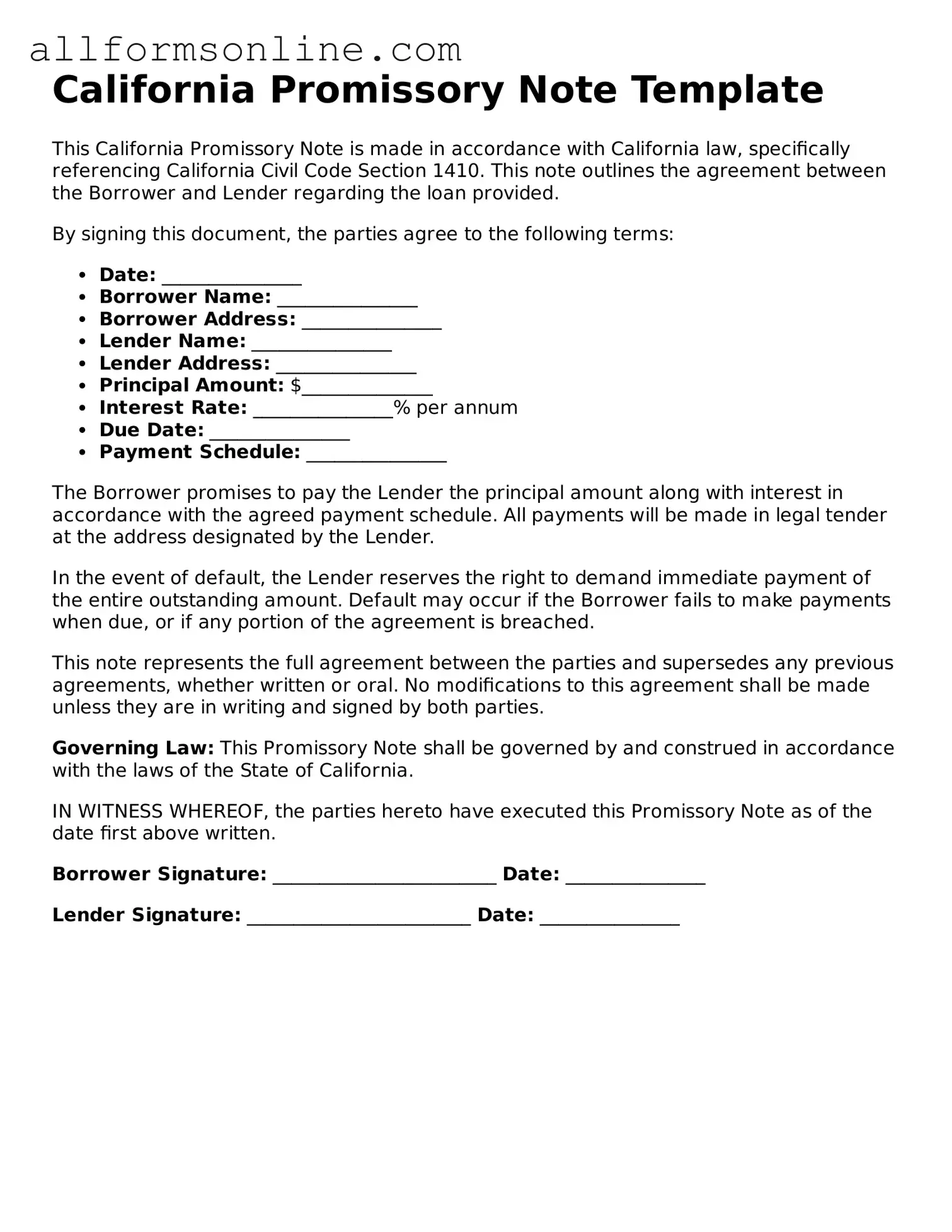What is a California Promissory Note?
A California Promissory Note is a legal document in which one party (the borrower) promises to pay a specific amount of money to another party (the lender) under agreed-upon terms. This document outlines the loan amount, interest rate, repayment schedule, and any other relevant conditions. It serves as a formal record of the debt and the obligations of both parties involved.
Who can use a Promissory Note in California?
Any individual or business can use a Promissory Note in California. This includes personal loans between friends or family, as well as business loans between companies. It is essential that both parties fully understand the terms and conditions outlined in the note before signing.
What are the key components of a California Promissory Note?
A California Promissory Note typically includes the following key components: the names and addresses of the borrower and lender, the principal amount of the loan, the interest rate, the repayment schedule, and any late fees or penalties. Additionally, it may contain clauses regarding default and remedies available to the lender if the borrower fails to repay the loan.
Is a Promissory Note legally binding?
Yes, a Promissory Note is legally binding once both parties sign it. This means that the borrower is obligated to repay the loan according to the terms specified in the note, and the lender has the right to take legal action if the borrower defaults. It is important for both parties to keep a copy of the signed document for their records.
Do I need to have a lawyer to create a Promissory Note?
While it is not legally required to have a lawyer draft a Promissory Note, it is advisable, especially for larger loans or complex agreements. A legal professional can ensure that the document meets all legal requirements and adequately protects the interests of both parties. For simple loans, templates are available online that can be customized.
Can a Promissory Note be modified after it is signed?
Yes, a Promissory Note can be modified after it is signed, but both parties must agree to the changes. Any modifications should be documented in writing and signed by both the borrower and lender to ensure clarity and legal enforceability. Verbal agreements regarding changes may not be sufficient.
